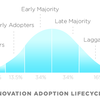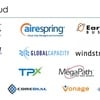Note: This isn't a political rant. It's a numbers game.
In 2010, current Florida Governor Rick Scott spent $40 million to win the governor's race. The voter turnout was 49% according to the state of Florida.
In 2012, the two candidates running for the highest office, POTUS, spent $1 billion each!!! Voter turn out was 58% - or 55% (depending on what stat you use). About 129 million people voted for president in 2012.
Two Billion dollars in advertising to 235 million registered voters to get 129 million to vote
One billion to get 62,615,406 votes (51%)
What did that $1 billion buy? Direct mail, TV and radio ads galore, signs, newspaper ads, big data experts, social media gurus, branding specialists, analytics and other stuff like office space, furniture, services (phones, Internet), food, hotels, travel.
There are 11,856,694 registered voters in Florida in 2014. Rick Scott is going to spend $100 million this time to win re-election. That's about $8 per registered voter.
"For AT&T, the 2012 spending tally added up to $1.59 billion in measured media, making it the nation's most-advertised brand, according to Ad Age DataCenter's analysis of spending data from WPP's Kantar Media. ... AT&T accounted for more than 1% of 2012 U.S. measured-media spending -- TV, radio, print, outdoor, internet display ads -- or $5.05 for every person in the United States." [AdAge]
What can we learn from this? A couple of things.
Know your customer (voter). The better you know who it is that is likely to vote for you or buy from you, the easier it is to get your message to them. Easier but maybe not cheaper.
Analytics (Big Data if you will) helps fine tune your message, your target, what's working, etc. Not just website analytics, but email tracking, newsletters, social media, and even direct mail (with platforms like ifbyphone)
If your product sucks (most political candidates are awful products to sell), it will cost more to advertise. (That's why the POTUS candidates had to spend more than AT&T.)
If you don't have a recognizable brand, the advertising will cost more as you perform branding for name recognition which means repetition to get the message through.
AT&T and the politicians spend a lot of money blanket advertising (TV, radio, newspapers) - just puking everywhere. That's fine if you have that kind of money, but if you do not, then you have to be a smarter marketer. Refine the message to resonate with your best targets.
Lucky for you, you don't need 62 million votes. If you get 35,000 customers, you are in the big time. You do that 1000 at a time. Refining, analyzing, targeting, growing. You aren't under an election cycle time frame.
In a lot of ways, the cellular industry is turning into politics. Trash talking, mud slinging, increased spending, blanket marketing. Why? Flat, hyper-competitive market with only take-away votes left. In other words, customer acquisition costs are increasing and retention costs are increasing.
You can polish a turd and market the heck out of it to dupe voters to buy it once, but it will only work once. You could be spending some of those ad dollars in other ways - like customer service, user experience, support, brand ambassadors, etc. Ways to add a WOW factor. Instead we still spin the same old wheel the same way.
Some Additional Thoughts from my brain:
In some respects, politics and elections helps up TV channels, direct mail operations, printers and the post office. Other big ad spenders - magazines, TV, newspapers, Internet - are Disney, JPM Chase, Chrysler and others.
Local elections are certainly easier - almost manageable. The data is crisper. You can door knock and get the community involved. It isn't much different from a regional CLEC, WISP or other service provider. There is data available about the businesses off your CO, near you towers, near your office. There are networking events that you can attend to meet prospects face to face.
Marketing isn't easy, but it isn't quantum mechanics either. It takes some planning and management.
It would be nice to spend $8 per prospect but













